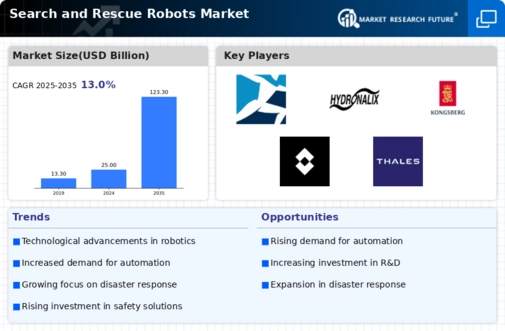Search and Rescue Robots Market Summary
As per Market Research Future Analysis, the Global Search and Rescue Robots Market was valued at USD 21.68 billion in 2023 and is projected to reach USD 66.92 billion by 2030, growing at a CAGR of 13% from 2024 to 2030. Key drivers include increased defense spending, advancements in robot technology, and rising incidents of terrorist attacks. The market is characterized by a growing demand for autonomous robots capable of operating in hazardous environments, enhancing the efficiency and safety of rescue operations.
Key Market Trends & Highlights
The Search and Rescue Robots market is witnessing significant advancements and growing adoption across various regions.
- Market Size in 2023: USD 21.68 billion.
- Projected Market Size by 2030: USD 66.92 billion.
- North America accounted for USD 18.35 billion in 2022, with significant growth expected.
- Asia Pacific is anticipated to grow at the highest rate, driven by increased robotics investment.
Market Size & Forecast
| 2023 Market Size | USD 21.68 billion |
| 2024 Market Size | USD 25.02 billion |
| 2030 Market Size | USD 66.92 billion |
| CAGR (2024-2030) | 13% |
Major Players
Key players include Boston Dynamics, Hydronalix, Kongsberg Maritime, Lockheed Martin Corporation, FLIR Systems Inc., Howe & Howe Technologies Inc., Northrop Grumman Corporation, Pliant Energy Systems LLC, Saab AB, Thales Group.

















Leave a Comment